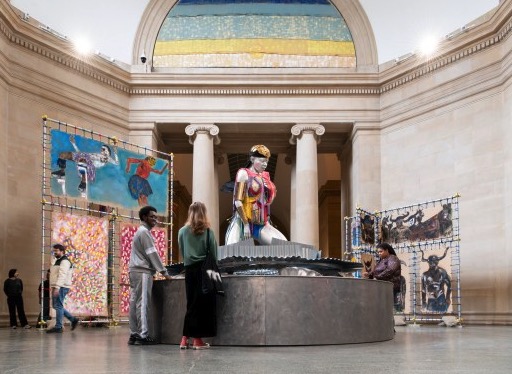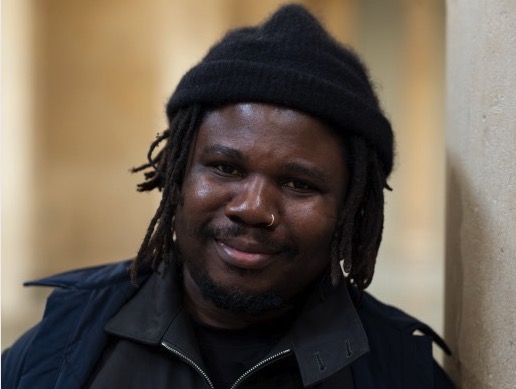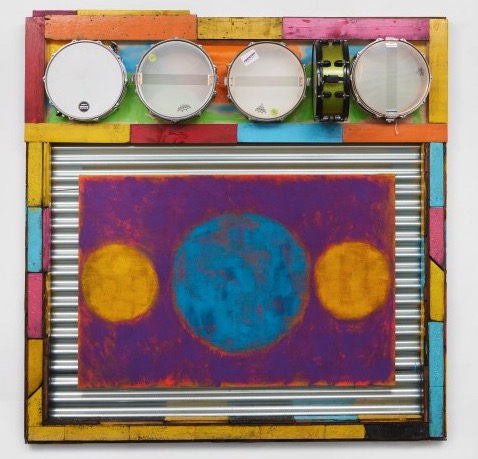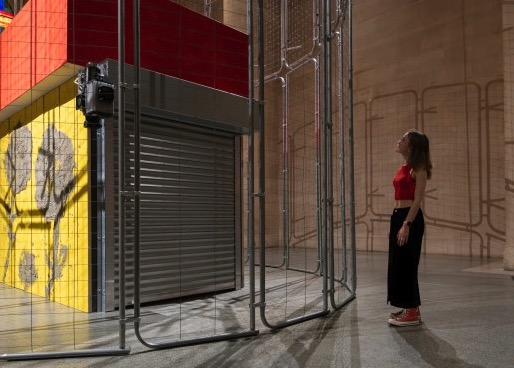
What is the worst exhibition space in the land? My vote would go to the Duveen Galleries, which run down the centre of Tate Britain. Nothing works here. Everything is problematic. Even the name.
Joseph Duveen was a crooked art dealer who falsified attributions, ruined old masters with over-cleaning and was directly responsible for the horrendous scraping down of the Elgin Marbles, which he wanted to make whiter. Yet his name is still displayed all over museum land and his sins are ignored.
Architecturally, only the Devil knows what Duveen was hoping to achieve with the fascistic new galleries he planted down the centre of the Tate. It was 1937, so perhaps the times can be blamed for some of the cold, stern, looming mood he created: the return to order and all that. The galleries were designed for sculpture. And that can sometimes survive here. Everything else is a goner.

Now poor old Alvaro Barrington, an enthusiastic and pleasing artist with Caribbean roots and a poignant backstory, has been handed these canyons of stone and encouraged to have a telling impact on them. Every two years another sucker artist takes a pop at the Tate Britain Commission, and every two years they battle with the spaces and fail.
Barrington was born in Venezuela in 1983, then moved to the Caribbean, then moved to New York, and has come to rest in Britain. His peripatetic past has filled him with a range of atmospheres to call on, but also — and this is way outside the scope of an art review — a vulnerable interior that seeks comfort and solace. The wonky installation with which he is now doing battle with the Duveen Galleries is called Grace, after the song Amazing Grace, and the art on show is dedicated to three women that Barrington, who’s something of a mama’s boy, wants to thank: his mother, his grandmother and his sister.
Each of them gets a section in an unfolding installation of raggle-taggle art. We start with his grandmother Frederica who looked after him in Grenada when he was a toddler, and whose small hut with a tin roof he tries to evoke with a scattering of furniture and a false ceiling of corrugated iron.

The trouble here is scale. Barrington’s memories of his granny’s tin house may be warm and poignant, but the looming canyon of the Duveen Galleries is not the place to evoke them. A sound system tries and fails to infiltrate the car-park spaces with the intimate patter of rain falling on a tin roof. And the multitude of sofas that are needed to fill the floor make the gallery look like a furniture warehouse on the North Circular. Duveen Galleries 1, Alvaro Barrington 0.
The second section is dedicated to Barrington’s sister Samantha and the Notting Hill Carnival at which she likes to dance. So many black artists have presented carnival as a symbolic subject that it has become a territorial trope. The last Tate Britain Commission, by Hew Locke, was also devoted to it. Here, the sexual politics grow quickly awkward as the artist’s sister, in revealing bikini wear, emerges from a circle of tin drums like Marilyn Monroe jumping out of a cake in Some Like It Hot.
Barrington is basically a painter, whose talents do not extend very far when he tries his hand at installation. The central sculpture of sister Samantha strikes a clumsy note, and the artist is obviously more at ease with the scattering of carnival paintings that complete the scene. Attached in an ungainly fashion to a ring of homemade display stands — in the Duveen Galleries, nothing can be screwed to the walls because of nutty listed building regulations — they offer pleasing evidence of Barrington’s lively and colourful touch. Give him a paintbrush and he relaxes. Duveen Galleries 1, Alvaro Barrington 1.

The final space is devoted to his mother, Esmeralda. Having spent his toddler years with his grandmother in the Caribbean, Barrington moved to Brooklyn with his mum when she was finally able to take over his care. At the time New York was in the throes of a drug crisis. The city was bleak and dangerous. And that’s what the artist tries to convey here with a stripped-down evocation of a New York street corner on which an empty store window opens and shuts its metal roller blinds, while the cage that surrounds it throws threatening shadows on the wall.
Once again the scale of the Duveen Galleries kills the intended sense of threat and twilight. The street corner is too small and the columnal surroundings too large. A small fork is rattling around a huge cutlery drawer. Duveen Galleries 2, Alvaro Barrington 1. Once again, the artist loses. There’s no shame in the defeat, but you do wonder why Tate Britain keeps doing this to its children.
That said, another of the tricky Tate spaces, the big staircase that leads from the lower floor, has had more success with a Chris Ofili fresco commemorating the Grenfell fire. The space is tricky because its painting surfaces are compromised by messy edges and the sprawling staircase. Ofili has done well to turn the unfolding fresco into something coherent.
On the left, the burning tower. In the middle, a portrait of one of its victims, the artist Khadija Saye. On the right, a lyrical evocation of the divine peace that awaits her. It’s poetic, charming, naive. Here and there, the architecture defeats the drawing. But the thinking is original, and the artist deserves a salute.
Grace is at Tate Britain until Jan 26